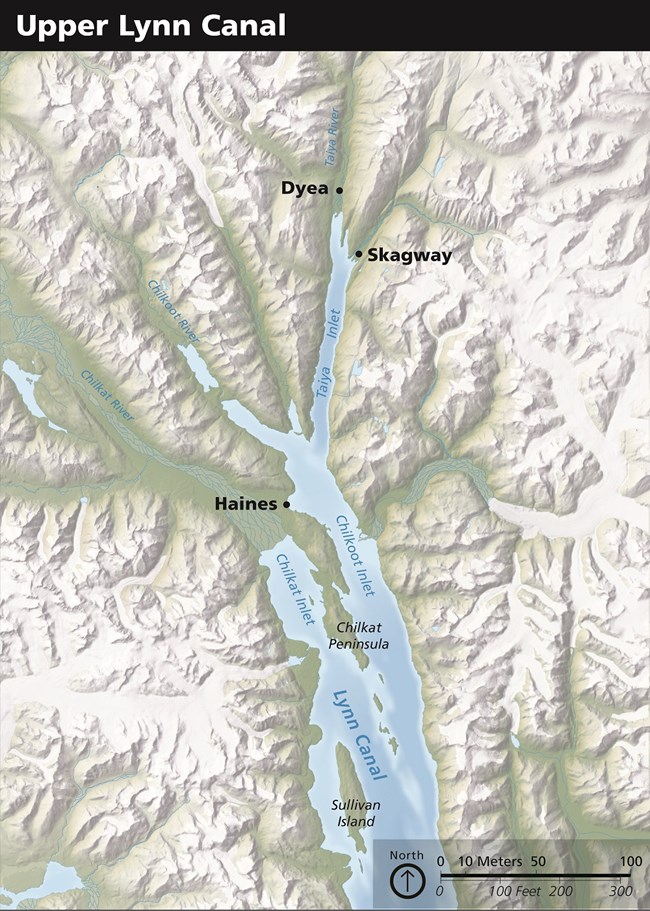
NPS image The Klondike Gold Rush brought thousands of new, inexperienced people to Northern Lynn Canal. As they attempted to strike it rich they overran the landscape and the people already living there. Both the United States and Canada wanted to claim the port towns of Skagway and Dyea. This wild frontier was in need of law and order. By mid-April 1898 the bulk of the winter's stampeders had moved on. The US Army reviewed its needs and decided one company was sufficient to protect American interests. Companies A and G went back to the Fort Vancouver Barracks with the start of the Spanish-American War. Company H moved further south in Alaska to Fort Wrangell. Company B remained in an increasingly less populated Dyea. During the next year, Company B handled minor issues in the area. They provided support in Skagway after the death of Jefferson Randolph "Soapy" Smith. Several detachments made trips to Pyramid Harbor to settle disagreements between the Chilkat Tlingits and white settlers. During the winter of 1899 they managed a packer strike on the Brackett Wagon Road. The next month they provided law and order in Skagway during a railroad construction workers strike. At the same time the Company dealt with problems at their camp. Slow mail, rickety buildings, camp security, and inadequate drinking water sources all plagued them. In October 1898, Captain Yeatman moved the camp 3 miles south of Dyea. Their new home consisted of infrastructure rented from the Dyea-Klondike Transportation Company. On December 31, 1898 the Dyea Military Reservation was established around the new camp. In May 1899 the 14th Infantry was relieved by another regiment, fresh off of fighting in the Spanish-American War, the Buffalo Soldiers of the 24th Infantry. |
Last updated: December 20, 2016
